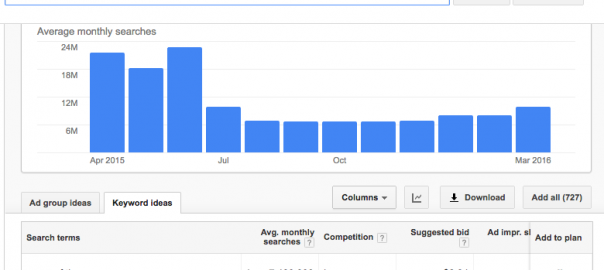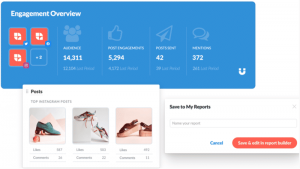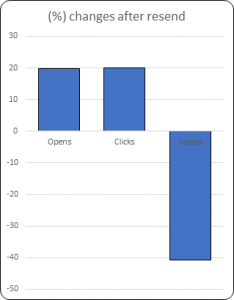For those of you who were born (July 08, 2016) and do not know what SEO is–it stands for Search Engine Optimization. In a nutshell, this means using different methodologies to increase the amount of organic traffic to your site.
In the past, many people used methods which would today be coined as Black Hat SEO techniques. No, this does not mean that you wear a black hat while working towards boosting your SEO. Rather, it means using risky methods that Google does not like, resulting in your site’s penalization. In fact, even today people still use these tactics and wonder why they are not moving up in PageRank.
Google literally runs the world. Think of Google as Sauron the all-seeing eye from the Lord of The Rings. If you think of Black Hat SEO techniques as the One Ring, then whenever you use them, Google will find you.

Terrifying, right? So how do you avoid the wrath of Google? You need to use White Hat SEO techniques.

What is White Hat SEO?
Simply stated, White Hat SEO is the opposite of Black Hat SEO. It refers to using methods that boost your performance on a search engine results page (SERP) without going against the laws set forth by Sauron/Google.
In other words, it means creating high-quality original content, that people want and need. Easy, right?
Unfortunately, there are approximately 2 million blog posts written and published every single day. So ensuring that your content even manages to get seen is a struggle and a half!
In this section I am going to cover how to produce and optimize your content so that it ranks highly on Google. To do that, we’re going to explore:
- Deciding what content to write
- Keyword density percentage and meta description
- Ensuring your content is P.E.A.C.
Once you master these strategies, getting your site to rank as #1 on Google will seem as easy as tying your shoelaces.
Deciding What Content To Write

If you selected rarely or never, don’t worry. You’re not alone. In fact, 74% of marketers don’t have a content distribution plan at all when it comes to increasing blog traffic. While it’s still possible to rank high on certain long-tail keywords, if no one is searching for those terms to begin with, what’s the point of even creating the content? You might get a few new visitors, but not nearly as many as you could be.
By doing keyword research before you write an article, you can get a better sense of what type of content is most likely to bring higher volumes of traffic to your site.
Here’s a story for you:
The Venngage team recently put together a Game of Thrones Infographic because of the increase in excitement for the new season premiere. We knew that we wanted to create an infographic about all the betrayals that occurred throughout the previous five seasons, but we didn’t know which keyword would be best to target.

As you can see here, the term “Game of Thrones” receives nearly 7.5 million average monthly searches, and haslow competition.
What this means, is that a lot of people are Googling “Game of Thrones.” Naturally, with that many people looking for information on the series, there is an abundance of content on the subject.
Although the term is low competition, the first thing that appears on Google is HBO. For those of you who are not familiar with Game of Thrones, HBO is the official network broadcasting the series.
Guess how many inbound links that page has? It’s 4066…so far. The second site is IMDB and the third is Wikipedia. Yeah, we’re dealing with the big guys here.
Meaning if we wanted to rank as #1 on the term “Game of Thrones”, we would be competing head first with HBO, IMDB and Wikipedia. On top of that we would need more inbound links directed to the infographic on our blog, or at least more high-quality and relevant backlinks. Though I like to keep an open mind, that is almost impossible for a little infographic company like ourselves.
So we opted not to target that keyword. We decided instead to settle on either the term Game of Thrones Betrayals with 50 average monthly searches, or Game of Thrones Infographic with 880 average monthly searches and therefore more potential for increased blog traffic.
Although the content was relevant to the betrayals which took place in the series, the term infographic is far more relevant to our site and has a much higher volume of traffic.
And at last:

Now whenever someone searches for “Game of Thrones Infographic”, there is a good chance they will find our source naturally.
Here are the steps you’re going to take the next time you sit at your computer to write a blog post:
1. Create a list of keywords.
Now I use Google Keywords Planner to build my keyword lists, but I’ve heard some great things about Long Tail Pro as well.
Sticking with the example of Game of Thrones, let’s assume you run a GoT fan site. Naturally, the majority of the content you create would be relevant to the series. Type the term “Game of Thrones” into the keyword tool and then export the list of suggested words.
If you are an infographic maker like Venngage, then you would type the term “infographic” and find similar terms. Makes sense?
You’ll get something like this:
There are going to be a lot of terms in this document that will be of no use to you. So you’re going to select everything, then click on the data tab, and sort the column that shows you the Average Monthly Searches. Like this:

Most of the content you create on your blog is going to bring in long tail traffic, so aim to target a keyword that gets more than 400 monthly searches, but less that 10,000. Why? It’s just going to take a lot longer to rank on some of those higher volume keywords right away.
That being said, it all comes down to preference, so if you rather target really high volume words, go for it, but you will need patience and hard work.

2. Filter your list.
We’re going to aim to target keywords that are between 400 to 1,300 average monthly searches. Start by filtering out everything that doesn’t fall into that category. We’re also going to focus on optimizing for words that have a low competition.
Lucky for me, due to copyright laws, many terms related to Game of Thrones are not super competitive keywords!

Some people will tell you to target high competition keywords. If they are high competition and you can somehow outrank them, then it’s a win, right? But why would you waste your time and money working towards ranking for just ONE term, when you can rank for 20 different terms that are low competition and still bring in the same, or even more traffic, right? Just my opinion.

I did not intentionally mean to use so many Lord of The Rings memes and gifs. It just happened…in case you were wondering.
3. Select the top 10 relevant terms.
From your filtered list, you should now choose the top 10 relevant keywords to target. Let’s say your Game of Thrones fan site specifically blogs about family strife, or the tension between different houses. The keywords you choose to target would probably look something like this:

Nice work! Now you have some inspiration for new content as well.
Keyword Density Percentage And Meta Descriptions
The next thing to keep in mind when optimizing your content for SEO is the keyword density percentage and meta descriptions. This is probably the most exciting part about SEO!

I’m totally joking. I can’t believe you fell for that again.
It’s really not that exciting at all…
All this means is that throughout your article or blog post, you need to be using your chosen keyword frequently enough that Google considers it to be relevant content, but not so frequently that it seems like you’re keyword stuffing.
There is no exact percentage that is considered perfect, but typically anything higher than 10% is a bit much. I like to aim for 2% to 6%. All this means is that in a 100 word article, if you use your keyword 10 times, your keyword density would be 10%. So in a 1000 word article, using the word 10 times is a keyword density of 1%. Get it? Pretty straightforward right?
A good way to check your keyword density is with Seobook’s Keyword Analyzer.

You can just copy and paste your entire article as plain text and you will end up with something looking like this.

Notice that the words with the highest density percentage all make up our targeted keyword, “Game of Thrones Infographic”. Add up the percentage of each of those words and that’s the keyword density! As you can see, we hit a 4.38% keyword density which falls within the range we wanted.
I’m telling you, SEO doesn’t need to be that complicated!
The H2 Tags and Meta Descriptions
Your meta description is a short sentence describing what your article or page is about.

The keyword you are targeting should be present in the meta description, in the title and in the URL.
It’s a great idea to plug your keywords into your H1, H2 and H3 tags when it makes sense. Your H1 tag is the the title tag. In the case of this article you are currently reading, the H1 is 37 Proven Methods To Increase Blog Traffic and Boost Engagement. The H2 tag is the sub-header of your article, in our case that would be, “Step 1: Increase Blog Traffic by Understanding Your Audience Personas”. Your H3 is the heading within your H2 section, “How To Figure Out Who Your Optimal Audience Is”.
These tags basically function as bullet points for Google’s all-seeing eye to track down your content with more ease. It alerts Google that the content you are writing is in fact what you claim it is.
Based on all of this information can you tell what keyword I am optimizing this blog post for?
It’s “increase blog traffic”.
Ensuring Your Content Is P.E.A.C.
The most important part about optimizing your content for SEO is actually producing very high quality content. Remember how we talked about Black Hat SEO before? Well, one of the techniques from the olden days that falls into the Black Hat/Grey Hat SEO category was to produce mediocre content very frequently at about 500 words per article.

Ahrefs talks about this in more detail in their seo strategy. Basically, they go on to explain that they deleted almost 180,000 words from their blog, because producing excessive low-quality posts was actually harming their overall traffic.
Create P.E.A.C. Content:
Instead of creating tons of meh articles, it better suits your time to focus on writing high-quality and informative blog posts. In other words, write P.E.A.C. content.
What is P.E.A.C. you ask?
P.E.A.C. stands for Practical value, Entertaining, Awe-Inspiring, and Credible.
Practical value:
As a writer, marketer, businessperson, elf or wizard, your goal should be to provide value for your readers and users. Content that answers the questions your readers are asking and that is actually helpful is far more likely to result in natural inbound links. Also, people tend to shy away from overly promotional content and hate you more for publishing it.
Entertaining:
I mean if your content isn’t remotely entertaining and you don’t even bother injecting your personality or tone into the article, it’s boring. People don’t like boring. It puts you to sleep. And let’s face it, the core of a lot of marketing-related subjects are naturally boring, so it’s your job to make them interesting. Don’t be afraid to write with a conversational tone and add some humor to your posts.
Awe-Inspiring:
Does your content make people go Woooooah? If you ever watched Oprah, you might remember that she often talked about reaching that “Aha!” moment. If you’re goal is to teach your readers something, chances are there will be at least one person who reaches that “Aha!” moment. Even one little success is worthwhile.
Credible:
Use links. Lots of outbound links to relevant sources is a good thing. So many bloggers forget to include outbound links in their content. Not only does it tell Google that you’ve done your research and that your content is on point, but it tells your readers that the information you are sharing is credible and has been put to action by other people as well. Use lots of links, heck link to this article too!
Creating high-quality and high-value content is not just important for SEO, but it’s important if you want to make an impression on your readers. If you produce lot’s of blah or meh content, no one is going to trust your word, and no one is going to link back to you because your writing won’t be in depth enough.

Don’t just address a subject lightly, delve deep and get to the root of the topic. Show your readers that you know what you’re talking about. If you do a good enough job, they will reach out to you and thank you and ask for your opinion on their own content! And that’s a nice feeling.
Things to remember
If you got too lazy or you’re just too busy to read the whole article, that’s totally fine. I’ve put together a quick breakdown of everything you need to remember.
- Google is like Sauron. They see everything you do, especially when you use Black Hat SEO tactics, so stick with using White Hat SEO instead.
- Do keyword research before writing your content so you know which terms will increase traffic and which have the least competition.
- Use a tool like SEO Toolbook to figure out what the keyword density is in your blog post. Aim for less than a 10% keyword density, and at least a 2% keyword density. My recommendation is to hit between 4% and 6%.
- Include your keywords in the title, H2 and H3 tags when possible. Also include your keywords in the URL and the meta description of your blog post.
- Make sure your content is high-value by sticking to the rules of P.E.A.C.
- P.E.A.C. stands for Practical value, Entertaining, Awe-Inspiring and Credible.
- Don’t create mediocre or meh content. Offer your readers something that will help them and don’t be afraid to inject your own personality and tone when writing.
- Use lots of outbound links to relevant sources to reinforce the credibility of your content. For instance, if you write an article about SEO, you can link to this blog post because it will be relevant.
What might have taken you 7 minutes to read the full article, only took 30 seconds to read the key takeaways. I sincerely hope this is useful to you, it certainly has been to us at Venngage when it comes to trying to increase blog traffic. Your comments below are always very appreciated, and so are your tweets, Facebook and LinkedIn shares. Stay tuned for Part 3 where I will cover White Hat SEO outreach and link building tactics.
This content was originally published on the Venngage blog in the increase blog traffic post.
Digital & Social Articles on Business 2 Community(53)










